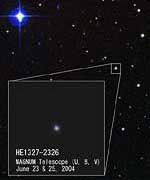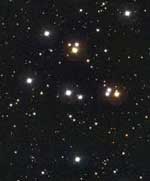The biggest mass extinction in Earth history some 251 million years ago was preceded by elevated extinction rates before the main event and was followed by a delayed recovery that lasted for millions of years. New research by two University of Washington scientists suggests that a sharp decline in atmospheric oxygen levels was likely a major reason for both the elevated extinction rates and the very slow recovery.
Earth’s land at the time was still massed in a supercontinent called Pangea, and most of the land above sea level became uninhabitable because low oxygen made breathing too difficult for most organisms to survive, said Raymond Huey, a UW biology professor.
What’s more, in many cases nearby populations of the same species were cut off from each other because even low-altitude passes had insufficient oxygen to allow animals to cross from one valley to the next. That population fragmentation likely increased the extinction rate and slowed recovery following the mass extinction, Huey said.
“Biologists have previously thought about the physiological consequences of low oxygen levels during the late Permian period, but not about these biogeographical ones,” he said.
Atmospheric oxygen content, about 21 percent today, was a very rich 30 percent in the early Permian period. However, previous carbon-cycle modeling by Robert Berner at Yale University has calculated that atmospheric oxygen began plummeting soon after, reaching about 16 percent at the end of the Permian and bottoming out at less than 12 percent about 10 million years into the Triassic period.
“Oxygen dropped from its highest level to its lowest level ever in only 20 million years, which is quite rapid, and animals that once were able to cross mountain passes quite easily suddenly had their movements severely restricted,” Huey said.
He calculated that when the oxygen level hit 16 percent, breathing at sea level would have been like trying to breathe at the summit of a 9,200-foot mountain today. By the early Triassic period, sea-level oxygen content of less than 12 percent would have been the same as it is today in the thin air at 17,400 feet, higher than any permanent human habitation. That means even animals at sea level would have been oxygen challenged.
Huey and UW paleontologist Peter Ward are authors of a paper detailing the work, published in the April 15 edition of the journal Science. The work was supported by grants from the National Science Foundation and the National Aeronautics and Space Administration’s Astrobiology Institute.
Not only was atmospheric oxygen content dropping at the end of the Permian, the scientists said, but carbon dioxide levels were rising, leading to global climate warming.
“Declining oxygen and warming temperatures would have been doubly stressful for late Permian animals,” Huey said. “As the climate warms, body temperatures and metabolic rates go up. That means oxygen demand is going up, so animals would face an increased oxygen demand and a reduced supply. It would be like forcing athletes to exercise more but giving them less food. They’d be in trouble.”
Ward was lead author of a paper published in Science earlier this year presenting evidence that extinction rates of land vertebrates were elevated throughout the late Permian, likely because of climate change, and culminated in a mass extinction at the end of the Permian. The event, often called “the Great Dying,” was the greatest mass extinction in Earth’s history, killing 90 percent of all marine life and nearly three-quarters of land plants and animals.
Ward said paleontologists had previously assumed that Pangea was not just a supercontinent but also a “superhighway” on which species would have encountered few roadblocks while moving from one place to another.
However, it appears the greatly reduced oxygen actually created impassable barriers that affected the ability of animals to move and survive, he said.
“If this is true, then I think we have to go back and look at oxygen and its role in evolution and how different species developed,” Ward said. “You can go without food for a couple of weeks. You can go without water for a few days. How long can you go without oxygen, a couple of minutes? There’s nothing with a greater evolutionary effect than oxygen.”
Original Source: UW News Release


